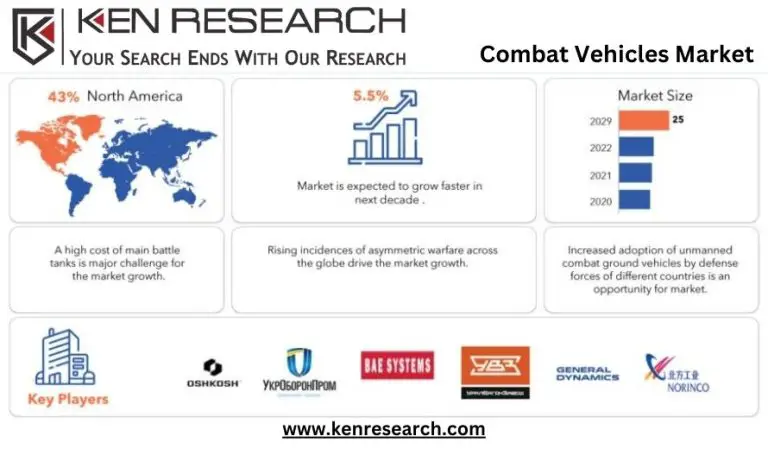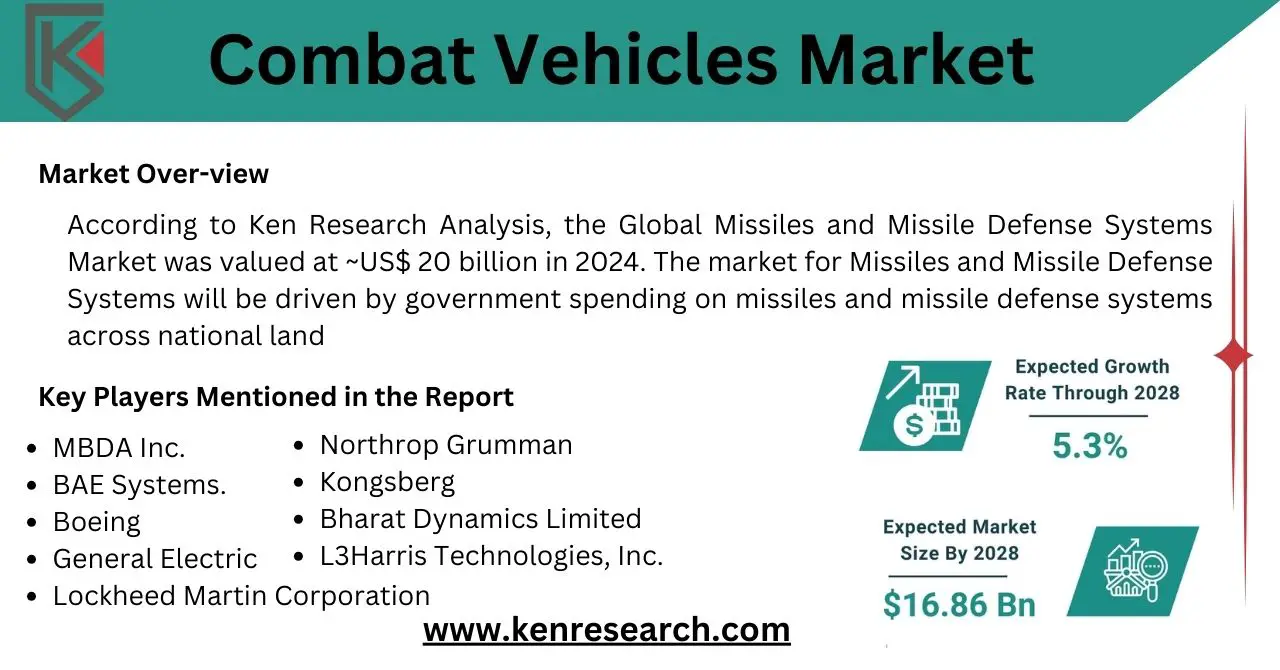The Armored Fighting Vehicles Market, exhibiting a robust growth projection from USD 24.05 billion in 2023 to USD 30.68 billion by 2028, showcases remarkable resilience amidst the challenges presented by the COVID-19 pandemic. This comprehensive analysis explores pivotal industry trends, major market players, and key growth drivers within the combat vehicles sector.
Combat Vehicles Industry Overview

Market Transformation
A notable shift from high consolidation to moderate fragmentation characterizes the current market landscape. The entry of local players in the Asia-Pacific and Middle Eastern regions contributes to increased competitiveness and diversity.
Combat Vehicles Market Key Players
- Major industry players, including
- Rheinmetall AG
- General Dynamics Corporation
- Nexter Group
- BAE Systems plc
- Oshkosh Corporation
play pivotal roles in shaping the market. The emergence of local players in the Middle East, such as Saudi Arabian Military Industries (SAMI) and STREIT Group, further intensifies market dynamics through strategic partnerships.
Combat Vehicles Market Growth Rate And Outlook
The market's resilience is evident in its projected Compound Annual Growth Rate (CAGR) of 4.99% during the period 2023-2028. Despite the global economic impact of the pandemic, procurement projects remained steadfast, resulting in a consistent increase in sales and revenues.
Global Trends in Armored Fighting Vehicles
Dominance of Infantry Fighting Vehicles (IFV)
The upcoming period signals the dominance of the Infantry Fighting Vehicle (IFV) segment, driven by increased procurement and a surge in global defense expenditure. IFVs play a pivotal role in transporting mechanized infantry units into battle, offering direct-fire support. Noteworthy projects, including the US Army's ground combat vehicles and Australia's Project LAND 400 Phase 3, underscore the strategic importance of IFVs.
Surge in Asia-Pacific Growth
The Asia-Pacific region is poised to witness the highest growth, fueled by escalating military spending. Countries like China, India, Australia, South Korea, Singapore, and Japan are making significant investments to replace aging fleets. Initiatives such as Japan's plan to replace light armored vehicles and India's acceptance of the necessity for Futuristic Infantry Combat Vehicles Market contribute substantially to regional growth.
Leading Market Players
Rheinmetall AG
A leading player with a focus on next-gen armored vehicles equipped with autonomous capabilities and advanced weaponry.
General Dynamics Corporation
Renowned for remanufactured and upgraded versions of existing vehicles, contributing significantly to the US Army's ground combat vehicles.
Nexter Group
A key player in the market, emphasizing efficiency, lethality, and surveillance capabilities in new-generation armored vehicles.
BAE Systems plc
A major contributor to the market, providing solutions such as the Stryker armored personnel carrier.
Oshkosh Corporation
Acknowledged for advancements in armored vehicles, enhancing situational awareness and survivability.
Recent Developments and Contracts
- March 2023: Australian and German officials signed an agreement for new combat vehicles.
- December 2022: Japan selected Patria-built armored modular vehicles to replace wheeled armored personnel carriers.
Conclusion
In conclusion, the trajectory of the Armored Fighting Vehicles Market remains positive, with key trends such as IFV dominance and the Asia-Pacific growth surge driving substantial expansion. The shift from a consolidated market to a moderately fragmented one introduces healthy competition, and collaborations further enhance the market's dynamics.
Read Also:– Combat Vehicles Market Insights: A Comprehensive Analysis
FAQs
-
What factors contribute to the dominance of Infantry Fighting Vehicles (IFVs)?
Ans. IFVs dominate due to their role in carrying mechanized infantry units into battle, providing direct-fire support, and their adaptability with modular add-ons for enhanced protection.
-
Why is the Asia-Pacific region expected to witness the highest growth?
Ans. The region's growth is attributed to escalating military spending, geopolitical tensions, and initiatives by countries like China, India, and Japan to replace aging armored vehicle fleets.
-
Who are the major players in the Armored Fighting Vehicles Market?
Ans. Key players include Rheinmetall AG, General Dynamics Corporation, Nexter Group, BAE Systems plc, and Oshkosh Corporation, contributing to advancements in next-gen armored vehicles.
-
How has the market dynamics changed with the entry of local players?
Ans. The market has shifted from being highly consolidated to moderately fragmented, with local players in regions like the Middle East expanding through strategic partnerships.
-
What recent developments highlight the market's resilience?
Ans. Recent agreements, such as the Australian-German collaboration for combat reconnaissance vehicles and Japan's selection of Patria-built armored modular vehicles, showcase the market's resilience and adaptability.





